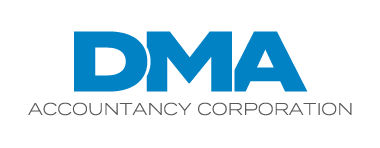Social media can connect people and information from all over the globe. Unfortunately, sometimes people provide bad advice that can lure good taxpayers into trouble.
Taxpayers need to be wary of trusting internet advice, whether it’s a fraudulent tactic promoted by scammers or it’s a patently false tax-related scheme trending across popular social media platforms. While some producers of misleading content are driven by criminal profit motive, others are simply trying to gain attention and clicks. They will post anything, no matter how wrong or outlandish, if it garners more attention.
The IRS is aware of various filing season hashtags and social media topics leading to inaccurate and potentially fraudulent information. The central theme of these examples involves people trying to use legitimate tax forms for the wrong reason.
Here are just two of the recent schemes circulating online:
Fraudulent advice on Form W-2. This scheme, circulating on social media, encourages people to use tax software to manually fill out Form W-2, Wage and Tax Statement, and include false income information. In this W-2 scheme, scam artists suggest people make up large income and withholding figures, as well as the employer its coming from. Scam artists then instruct people to file the bogus tax return electronically in hopes of getting a substantial refund sometimes as much as five figures due to the large amount of withholding.
There are two other variations of the W-2 scheme. Both involve misusing Form W-2 wage information in hopes of generating a larger refund:
- Fraudulent Form 7202: This scheme involves encouraging people to use Form 7202, Credits for Sick Leave and Family Leave for Certain Self-Employed Individuals, to claim a credit based on income earned as an employee and not as a self-employed individual. These credits were available for self-employed individuals for 2020 and 2021 during the pandemic; they are not available for 2023 tax returns.
- Fraudulent Schedule H: Another scheme encourages people to invent fictional household employees and then file Schedule H (Form 1040), Household Employment Taxes, to claim a refund based on false sick and family medical leave wages they never paid. The IRS is actively watching for this scheme. In addition, the IRS works with payroll companies and large employers as well as the Social Security Administration to verify W-2 information.
Form 8944 scheme. Another example of bad advice circulating on social media involves Form 8944, Preparer e-file Hardship Waiver Request. Wildly inaccurate claims made about this form include its use by taxpayers to receive a refund from the IRS, even if the taxpayer has a balance due. This is false information. Form 8944 is for tax professional use only.
While Form 8944 is a legitimate IRS tax form, it is intended for tax return preparers who are requesting a waiver so they can file tax returns on paper instead of electronically. It is not a form the average taxpayer can use to avoid tax bills.
Taxpayers who intentionally file forms with false or fraudulent information can face serious consequences, including potentially civil and criminal penalties, like criminal prosecution for filing a false tax return and a frivolous return penalty of $5,000.
How taxpayers can verify information. The best place for taxpayers to learn how to properly use tax forms, and to accurately follow social media channels related to taxes, is to go to IRS.gov or consult a legitimate tax professional.
IRS.gov has a forms repository with legitimate and detailed instructions for taxpayers on how to fill out the forms properly. Use IRS.gov to find the official IRS social media accounts, or other government sites, to fact check information or consult a trusted tax advisor.


Recent Comments